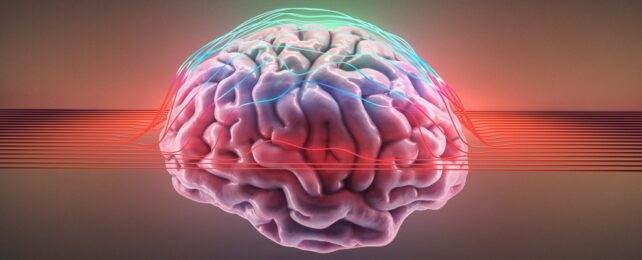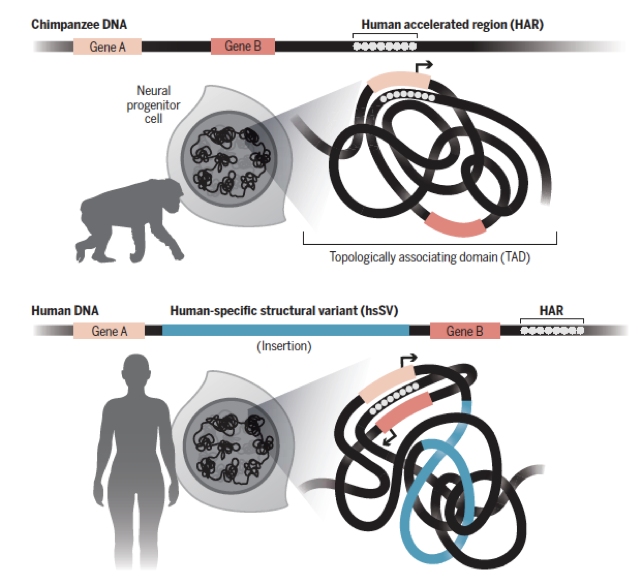
Like treasured recipes passed down from generation to generation, there are just some regions of DNA that evolution doesn't dare tweak. Mammals far and wide share a variety of such encoded sequences, for example, which have remained untouched for millions of years.
Humans are a strange exception to this club. For some reason, recipes long preserved by our ancient ancestors were suddenly 'spiced up' within a short evolutionary period of time.
Because we're the only species in which these regions have been rewritten so rapidly, they are called 'human accelerated regions' (or HARs). What's more, scientists think at least some HARs could be behind many of the qualities that set humans apart from their close relatives, like chimpanzees and bonobos.
Led by computational biologist Katie Pollard, director of the Gladstone Institute of Data Science and Biotechnology in the US, a team of researchers identified HARs nearly two decades ago while comparing human and chimpanzee genomes.
In a new study, Pollard's team found the 3D folding of human DNA in the nucleus is a key factor in this pivotal moment for our species.
Imagine a length of DNA from our last common ancestor with chimpanzees as a long scarf wrapped around your neck, with stripes of various colors running across its weave down its entire length.
Now picture someone tried to make the exact same scarf, but they didn't quite follow the original pattern. Some of the stripes are narrower, some are wider, and some feature colors in a different order than the original.
When you wrap that new scarf around your neck in the same way as the original, the stripes that sit next to each other in the loop are no longer the same.
Like this scarf, a big difference between human and chimpanzee DNA is structural: large chunks of the DNA's building blocks have been inserted, deleted, or rearranged in the human genome. So human DNA folds differently in the nucleus compared with the DNA of other primates.
Pollard's team investigated whether these structural changes in human DNA, and its altered 3D folding, could have led to particular genes within HARs being 'hijacked', linking them to different protein-coding genes than they were originally applied to.
Many genes within HARs are linked to other genes, acting as enhancers (meaning they increase transcription of their linked gene/s).

"Enhancers can impact the activity of any gene that ends up close by, which can vary depending on how DNA is folded," Pollard said.
In a study published earlier this year, Pollard's team created a model suggesting the rapid variations appearing in HARs in early humans often opposed each other, turning the activity of an enhancer up and down in a kind of genetic fine-tuning – a model supported by their new research.
For their most recent study, the team compared the genomes of 241 mammal species using machine learning to cope with a large amount of data.
They identified 312 HARs and examined where they are located within the 3D 'neighborhoods' of folded DNA. Almost 30 percent of HARs were in the regions of DNA where structural variations had caused the genome to fold differently in humans compared to other primates.
The team also discovered neighborhoods containing HARs were rich with the genes that differentiate humans from our closest relatives, chimpanzees.
In an experiment that compared DNA within growing human and chimpanzee stem cells, one-third of identified HARs were transcribed specifically during the development of the human neocortex.
Many HARs play a role in embryo development, especially in forming neural pathways associated with intelligence, reading, social skills, memory, attention and focus – traits we know are distinctly different in humans than other animals.
In HARs, these enhancer genes, unchanged for millions of years, may have had to adapt to their different target genes and regulatory domains.
"Imagine you're an enhancer controlling blood hormone levels, and then the DNA folds in a new way and suddenly, you're sitting next to a neurotransmitter gene and need to regulate chemical levels in the brain instead of in the blood," Pollard said.
"Something big happens like this massive change in genome folding, and our cells have to quickly fix it to avoid an evolutionary disadvantage."
We don't yet understand exactly how these changes have impacted specific aspects of our brain development, and how they became an integral part of our species' DNA. Though Pollard and her team are already planning to delve into these questions.
But their research so far does show just how unique – and unlikely – the evolution of the human brain really is.
This study was published in Science.





No comments:
Post a Comment